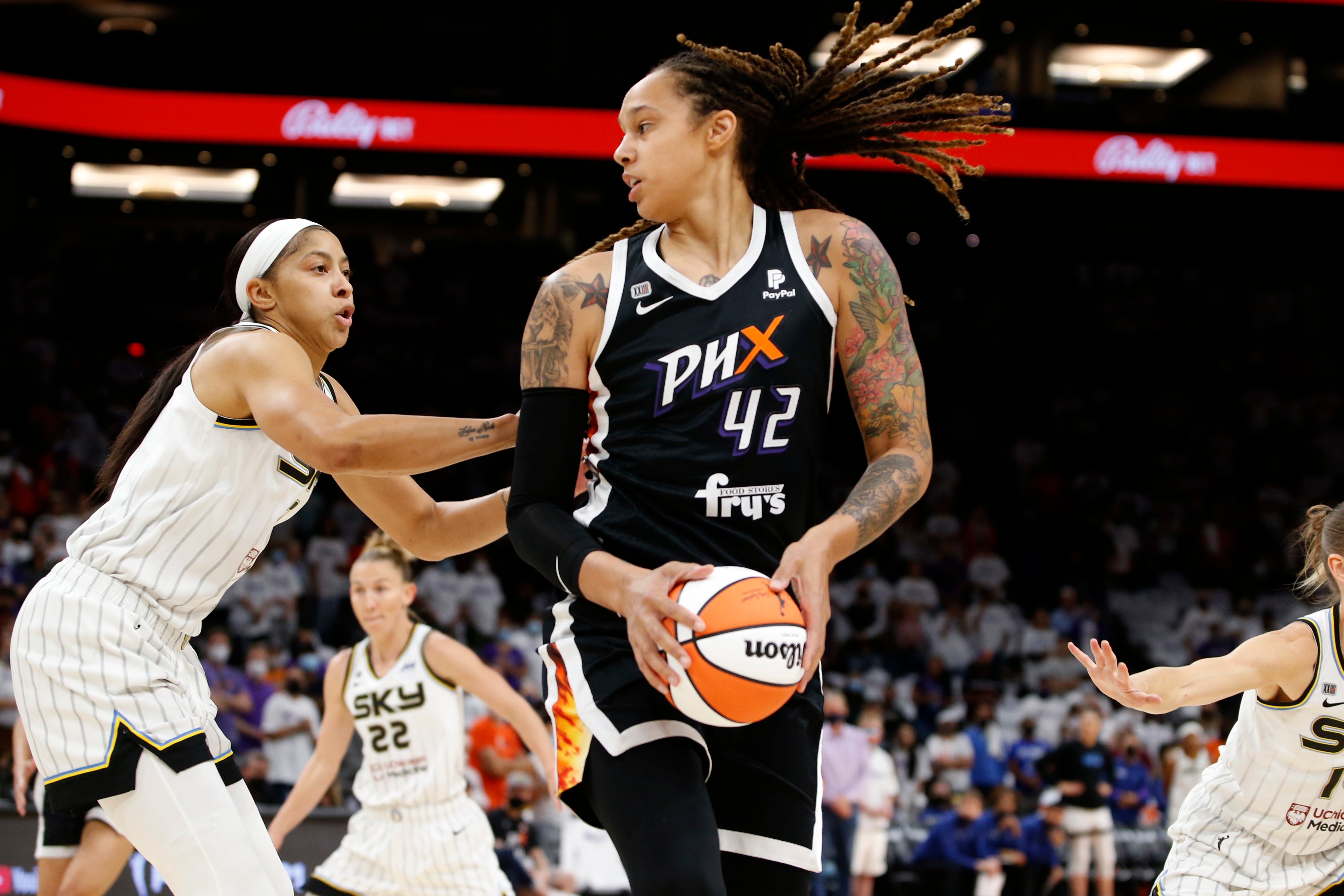EXPLAINER: Why WNBA players go overseas to play in offseason
Russia has been a popular destination for WNBA players like Brittney Griner over the past two decades because of the money they can make playing there in the winter

Your support helps us to tell the story
From reproductive rights to climate change to Big Tech, The Independent is on the ground when the story is developing. Whether it's investigating the financials of Elon Musk's pro-Trump PAC or producing our latest documentary, 'The A Word', which shines a light on the American women fighting for reproductive rights, we know how important it is to parse out the facts from the messaging.
At such a critical moment in US history, we need reporters on the ground. Your donation allows us to keep sending journalists to speak to both sides of the story.
The Independent is trusted by Americans across the entire political spectrum. And unlike many other quality news outlets, we choose not to lock Americans out of our reporting and analysis with paywalls. We believe quality journalism should be available to everyone, paid for by those who can afford it.
Your support makes all the difference.Russia has been a popular destination for WNBA players like Brittney Griner over the past two decades because of the money they can make playing there in the winter.
With top players earning more than $1 million — nearly quadruple what they can make as a base salary in the WNBA — Griner, Breanna Stewart, Diana Taurasi, Sue Bird and Jonquel Jones have been willing to spend their offseason playing far from home. It’s tough for WNBA players to turn down that kind of money despite safety concerns and politics in some of the countries where they play.
The 31-year-old Griner, a seven-time All-Star for the Phoenix Mercury, has played in Russia since 2014. She was returning from a break for the FIBA Women's Basketball World Cup qualifying tournaments when she was arrested at an airport near Moscow last month after Russian authorities said a search of her luggage revealed vape cartridges.
On Saturday, the State Department issued a “do not travel” advisory for Russia because of its invasion of Ukraine and urged all U.S. citizens to depart immediately, citing factors including “the potential for harassment against U.S. citizens by Russian government security officials” and “the Embassy’s limited ability to assist” Americans in Russia.
Turkey, Australia, China and France also have strong women’s basketball domestic leagues where some of the WNBA's best play in their offseason.
WHY RUSSIAN SALARIES ARE SO HIGH
Russian sports leagues have been able to pay top players these high salaries because some of the teams are funded by government municipalities while others are owned by oligarchs who care more about winning championships and trophies than being profitable. There are stories of Russian owners putting up players in luxury accommodations and taking them on shopping sprees and buying them expensive gifts in addition to paying their salaries.
In 2015, Taurasi’s team, UMMC Ekaterinburg — the same one Griner plays for — paid her to skip the WNBA season and rest.
“We had to go to a communist country to get paid like capitalists, which is so backward to everything that was in the history books in sixth grade,” Taurasi said a few years ago.
The Russian league has a completely different financial structure from the WNBA, where there is a salary cap, players' union and collective bargaining agreement.
The WNBA has made strides to increase player salaries and find other ways to compensate players in the last CBA, which was ratified in 2020. The contract, which runs through 2027, pays players an average of $130,000, with the top stars able to earn more than $500,000 through salary, marketing agreements, an in-season tournament and bonuses.
The CBA also provides full salaries while players are on maternity leave, enhanced family benefits, travel standards and other health and wellness improvements.
WHO PLAYS THERE?
More than a dozen WNBA players were playing in Russia and Ukraine this winter, including league MVP Jones and Courtney Vandersloot and Allie Quigley of the champion Chicago Sky. The WNBA confirmed Saturday that all players besides Griner had left both countries.
Almost half of the WNBA's 144 players were overseas this offseason, although stars Candace Parker, Bird, Chiney Ogwumike and Chelsea Gray opted to stay stateside.
WILL THIS LAST?
From purely a basketball stand point, the CBA will make it more difficult for WNBA players to compete overseas in the future. Beginning in 2023, there will be new WNBA prioritization rules that will be enforced by the league. Any player who arrives late to training camp will be fined at a rate of 1% of base salary per day late. In addition, any player who does not arrive before the first day of the regular season will be ineligible to play at all that season. In 2024 and thereafter, any player who does not arrive before the first day of training camp (or, with respect to unsigned players, finish playing overseas) will be ineligible to play for the entire season.
The WNBA typically begins training camp in late April and the regular season starts in early May. Some foreign leagues don't end before those dates.
___
More AP women’s basketball: https://apnews.com/hub/womens-basketball and https://twitter.com/AP_Sports